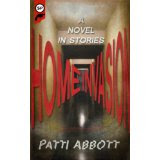
I confess: Cheese is not my only passion. I’m a color junkie, too. From that first big box of crayons to midnight showings of Fantasia to Downton Abbey’s rich décor, I’ve never been able to get enough. I follow color the way some people follow Brangelina. Martha Stewart’s Araucana chicken-egg hues spark my imagination, as does color guru Donald Kaufman’s custom-blended barn paint based on a green dumpster. Certainly, I’d find a use for that shade, too.
If inspiration indeed comes from anywhere, why not the cheese counter? I recall that scene in Mr. Blandings Builds His Dream Housewhere Muriel tells the house painter, “If you’ll send one of your men to the grocer for a pound of their best butter, and match that exactly, you can’t go wrong!”
I understand the sentiment. Before me at the market weren’t just wheels of cheese, but a veritable palette of options. Vibrant orange Mimolette (I can envision my kitchen in that tint). Morbier’s grey-ash racing stripe set in pale yellow topped with blush-colored rind (guest room). The dreamy aquamarine of Shropshire Blue (my bedroom, definitely). My mouth watered. My heart soared.
I grabbed a bright yellow and Wizard of Oz-esque emerald Sage Derby (solarium) and a deep-gold and chocolate-tinged Cahill’s Irish Porter Cheese (den) and headed to my local Benjamin Moore store. The spectrometer couldn’t handle food, but color-matching whiz Mary Ray suggested mixes like Da Vinci’s Canvas with a tweaked Grassy Fields and Valley View, Bittersweet Chocolate, and Hadley Red. Still, I was unsure. Combining these passions begged for a higher power. So I rang up Donald Kaufman himself. My timing was perfect.
“My wife and I were just looking at some cheeses,” said Kaufman, whose wife is also design partner Taffy Dahl. Together they’ve blended 30,000 to 40,000 custom colors, including some now in the Oval Office. “We were marveling at the different soft, creamy whites, the grays, the greens, the rind colors. We’re always looking for good color.”
“Color can be anything,” he said. “We’ve very often been asked to match food from ripe mangoes to Gaines-Burgers. Natural material has more intrinsic depth and nuance than any manufactured material.”
So how can I bring those cheese colors to life?
Kaufman demurred. There are so many considerations. The light, for one. A room with bright light brings out the yellow, definitely a consideration for cheese. Then there are the room’s architecture, atmosphere, and context.
My best bet, he said, is to experience colors in each room as the light changes throughout the day, as well as in artificial light. Usually, this is done by painting walls in large swaths and comparing. I proposed actual cheese swatches, and an amused Kaufman goaded me on.
So up went slabs of cheeses affixed to boards propped opposite windows. On the mantle. On my desk. It was nice to have room-temperature cheese within reach, but I worried about mice. Pinching off little nibbles like a mouse, I paced between rooms, charmed and daydreaming.
Finally, I was sated with both cheese and research. But something still gnawed at me and I couldn’t put a name on it. That’s because Kaufman designates colors by numbers. Instead, I hungered for evocative words.
But Kaufman was adamant. “Names bring in emotional associations that get in the way of really experiencing colors,” he insisted.
I felt an unnumbered color rising in my cheeks. Would he feel differently about Bayley Hazen Blue if it were Bayley Hazen 37?
“Absolutely,” Kaufman affirmed. But he was off to lunch. “There’s a cream-colored goat thing in the fridge.”
Written by Robin Watson
Illustration by Richard Mia
Illustration by Richard Mia










































